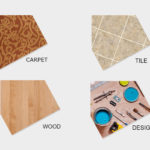Product development demands precision and efficiency in a fast-paced environment. One crucial element in this process is the creation of functional prototypes. This article delves into the significance of functional prototypes, shedding light on their importance and the steps involved in their creation. For businesses navigating the landscape of prototyping, understanding the role of functional prototypes can be a game-changer.
What is a Functional Prototype?
A functional prototype is a tangible, working model of a product that demonstrates its core features and functionalities. Unlike other types of prototypes, such as visual or static models, a functional prototype goes beyond appearances. It allows stakeholders to interact with the product, testing its functionality and validating design concepts.
Why Create a Functional Prototype?
Creating a functional prototype serves various crucial purposes in the product development process. Firstly, it provides a hands-on experience, enabling stakeholders to assess the product’s usability and functionality. This tangible representation facilitates a more accurate evaluation of the design’s feasibility and identifies potential challenges early on.
Moreover, a functional prototype serves as a communication tool, helping bridge the gap between designers, engineers, and stakeholders. It provides a common ground for discussions, enabling effective collaboration and reducing misunderstandings during development.
When to Create a Functional Prototype?
Determining the right time to create a functional prototype is key to optimizing the product development process. Ideally, this phase should come after the initial design concepts have been thoroughly reviewed and refined. Once the design is deemed viable on paper, creating a functional prototype becomes the next logical step.
However, it’s essential to strike a balance. Creating a functional prototype too early may lead to unnecessary iterations, while delaying it may result in overlooking critical design flaws. Timely integration of the functional prototype stage ensures a more streamlined and efficient development process.
What Must a Functional Prototype Be Like?
A successful functional prototype should mirror the intended end product as closely as possible. It must embody the core functionalities and interactions envisioned in the design. The prototype should be constructed using materials and components that closely resemble those intended for the final product, offering an accurate representation of its form and function.
Additionally, a functional prototype should be scalable, allowing for easy modifications and adaptations as the design evolves. This adaptability ensures the prototype remains a valuable tool throughout the iterative design process.
Steps in Creating a Functional Prototype
- Conceptualization: Begin by clearly defining the purpose and core functionalities of the product. This stage involves collaborative brainstorming and idea generation.
- Design Development: Translate the conceptualized ideas into detailed designs. Leverage computer-aided design (CAD) tools to create a digital representation of the product.
- Material Selection: Choose materials for the prototype that closely mimic the final product. Consider factors such as durability, flexibility, and cost-effectiveness.
- Prototype Construction: Utilize advanced manufacturing techniques such as 3D printing, CNC machining, or vacuum casting to build a physical prototype.
- Testing and Iteration: Rigorously test the functional prototype, identifying any issues or areas for improvement. Use feedback to iterate on the design, ensuring the final product meets all requirements.
- Finalization: Once the functional prototype meets all specifications and has undergone successful testing, it becomes the blueprint for mass production.
Conclusion
In the dynamic landscape of product development, functional prototypes can be invaluable tools. In addition to bringing designs to life, they serve as catalysts for collaboration and innovation. Businesses seeking to navigate the complex terrain of prototyping should recognize the pivotal role that functional prototypes play in shaping successful products. As technology advances, incorporating functional prototypes into the product development process will likely become even more seamless, ensuring precision and efficiency in bringing ideas to fruition.
If you are looking for plastic prototype companies specializing in creating functional prototypes, consider partnering with experienced professionals who understand the nuances of turning innovative ideas into tangible, functional realities.
Related Posts
Hi there! I’m Sethu, your go-to guy for all things tech, travel, internet, movies, and business tips. I love sharing insights and stories that make life more interesting. Let’s explore the world together, one article at a time!











